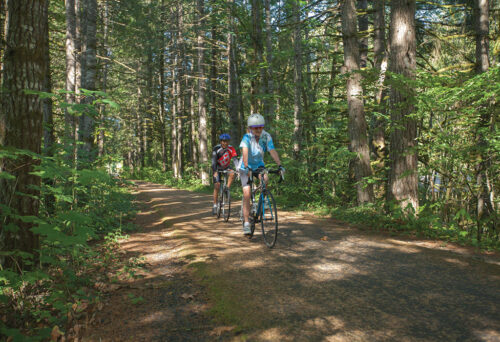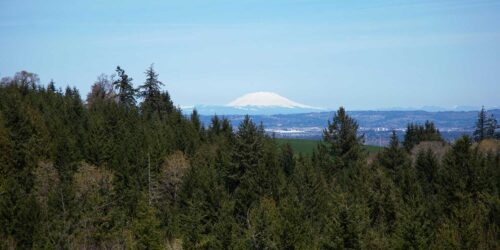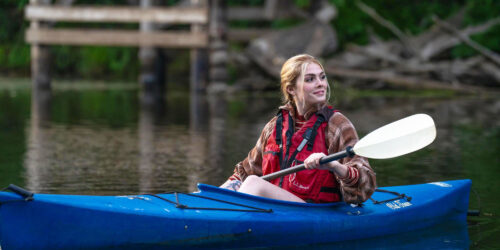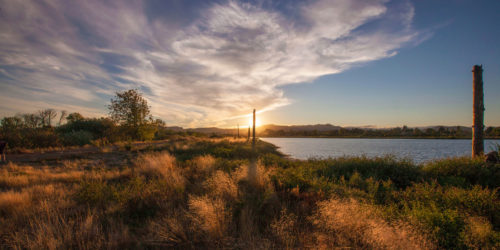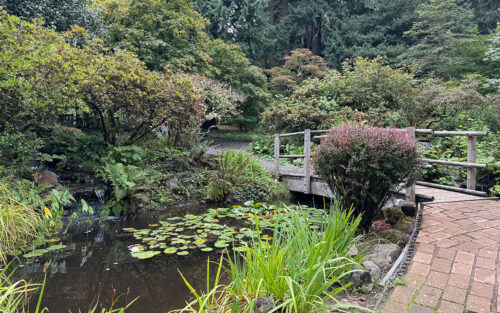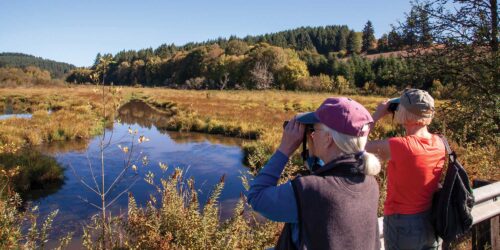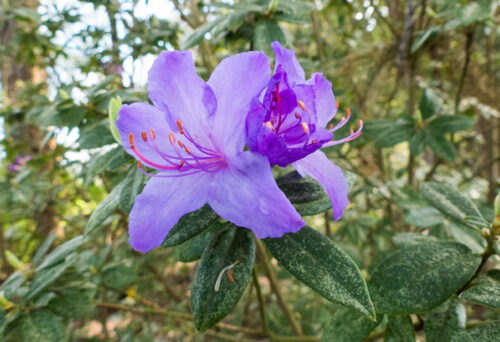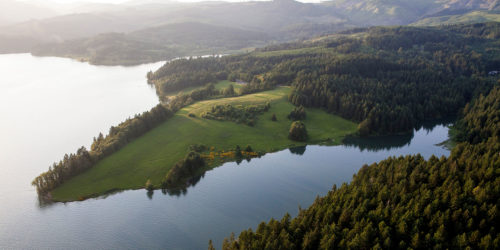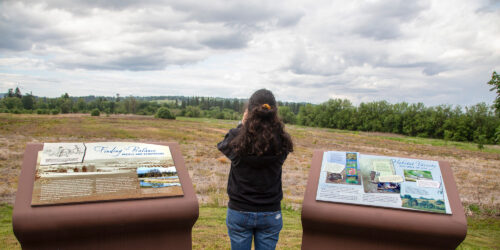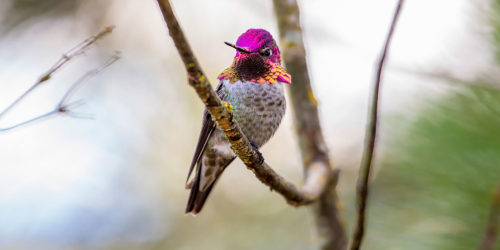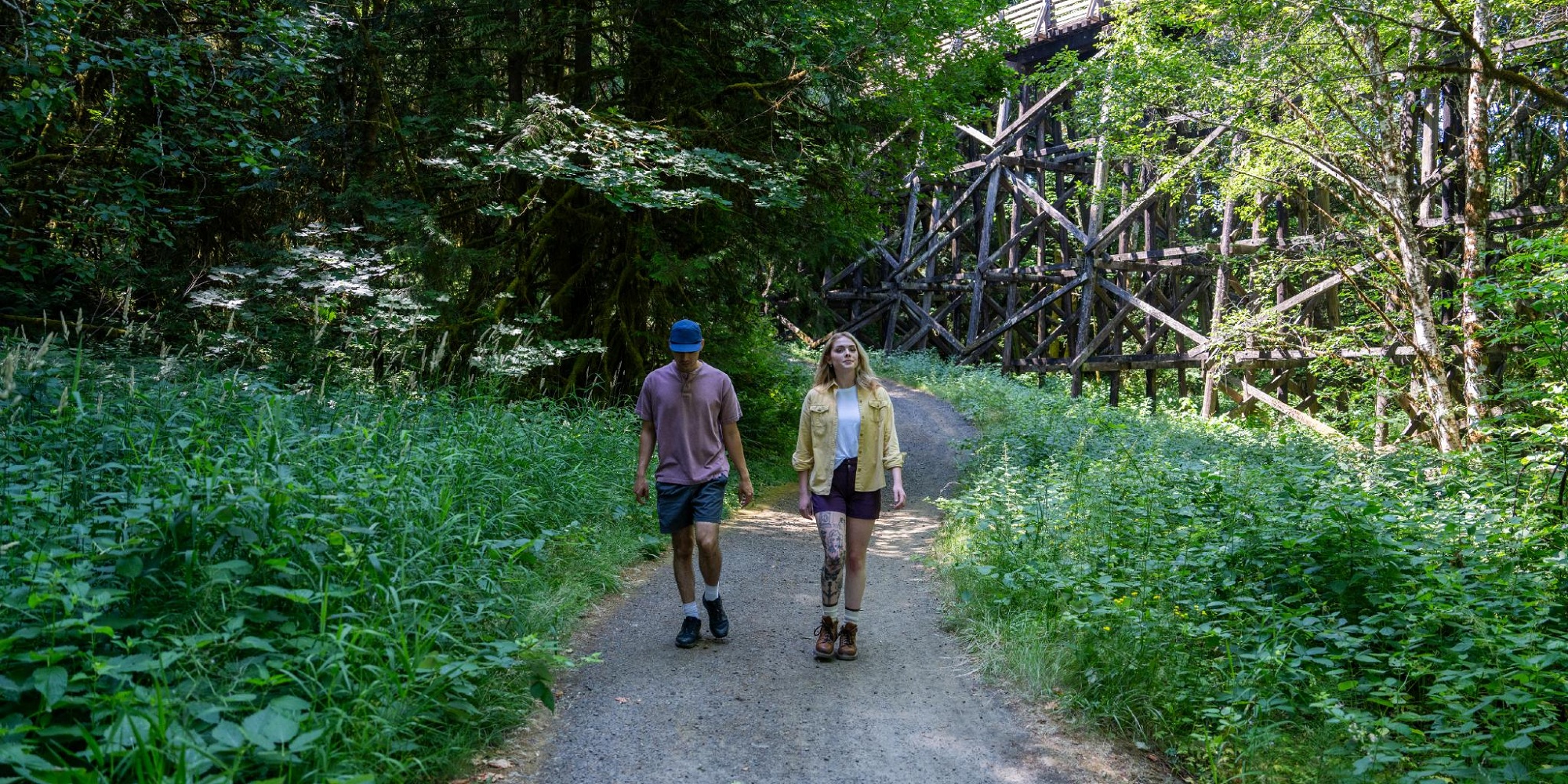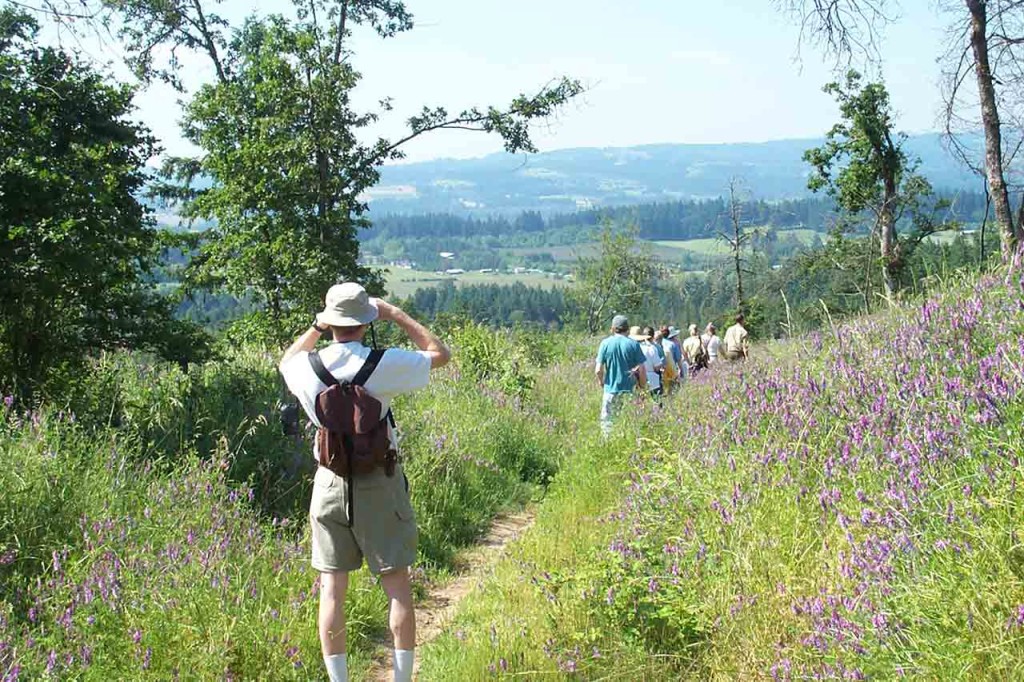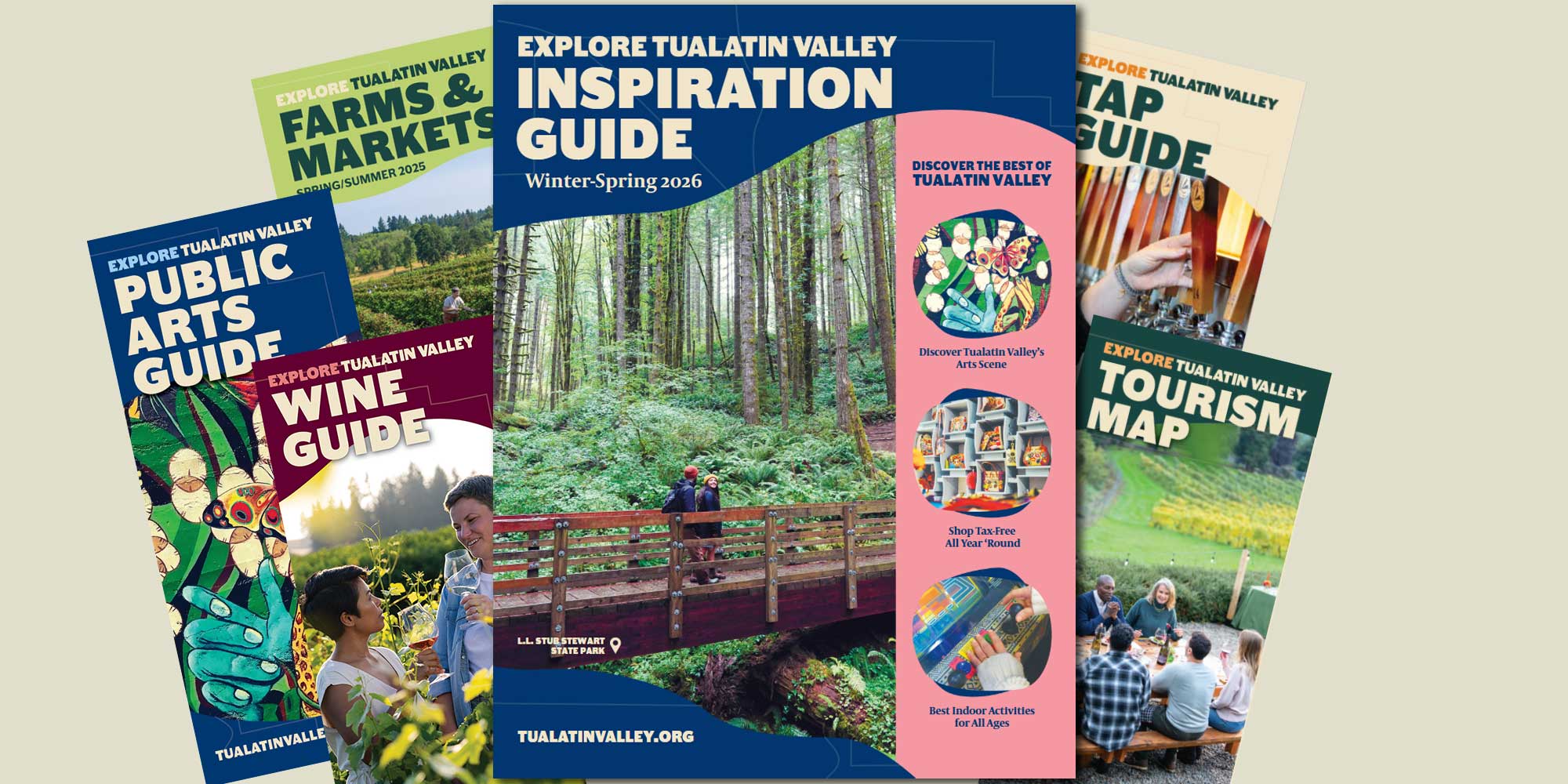This is Your Passport to Nature in Tualatin Valley
The vastness of Tualatin Valley offers innumerable options for getting in touch with nature. Many of the valley’s 727 square miles are devoted to pristine wetlands, nature parks, wildlife refuges and preserves, verdant forests, and tranquil waters. Tualatin Valley is an ideal destination for hiking, cycling, paddling, fishing, wildlife watching, nature and wildflower walks and other outdoor pursuits.
Vibrant bird and wildlife habitats provide naturalists opportunities to spot flora and fauna, as the valley is home to more than 200 species of birds, dozens of species of mammals, many species of reptiles and amphibians and more.
Bring your binoculars, scopes and cameras and head out on a wildlife adventure in the Tualatin Valley.
Banks-Vernonia State Trail
The Banks-Vernonia State Trail, Oregon’s first rails-to-trails park, is a 21-mile (one way), multi-use, car-free trail. Amenities and attractions along the route include trailhead parking areas, trestle/bridge crossings and day use areas. The trail may be accessed at any of six points, including trailheads at Manning, Buxton, Tophill and Beaver Creek, as well as the cities of Banks and Vernonia.
Chehalem Ridge Nature Park
Chehalem Ridge Nature Park is a 1,250-acre nature park with 10 miles of trails, including three miles of accessible trails, for walking, off-road cycling and horseback riding. The Park is home to multiple habitats, including upland forests, oak woodlands and wetlands.
Cook Family Park
Cook Family Park is conveniently located in the city of Tigard, on the banks of the Tualatin River. The 79-acre park has more than 2.5 miles of hard and soft-surface trails, a butterfly garden, river access, wetland areas, picnic tables, park shelters, playgrounds and restrooms.
Cooper Mountain Nature Park
Overlooking the Tualatin Valley, the 230-acre Cooper Mountain Nature Park offers visitors grand views of the Chehalem Mountains and features 3½ miles of trails of varying difficulty) that traverse the park and pass through a mosaic of distinct habitats: oak and madrone woodlands, native prairies, and conifer forests.
Fernhill Wetlands
Fernhill Wetlands is located near the confluence of Gales Creek with the Tualatin River, just minutes from downtown Forest Grove. It’s a world-class destination for birders who come to see rare migratory birds and waterfowl. The site encompasses nearly 800 acres and attracts various wildlife, including herons, hawks, eagles, beavers, otters and mink. Amenities include public parking, restrooms, picnic shelter and short trails with viewing stands.
Gales Creek Trail at Tillamook State Forest
Meandering among fir trees and rivers in the Tualatin Valley, the Gales Creek Trail, in the vast Tillamook State Forest, is a 12.7-mile trail of moderate difficulty open to hikers and mountain bikers.
Jackson Bottom Wetlands Preserve
Jackson bottom features year-round wildlife viewing from 4.5 miles of trails, wildlife viewing blinds and the deck of the 12,000-square-foot Wetlands Education Center. The Center offers unique hands-on exhibits, tours, programs for schools and groups, volunteer opportunities, facility rentals, fantastic views of the wetlands and a Nature Store.
Jenkins Estate
The 68-acre Jenkins Estate on Cooper Mountain is listed on the National Register of Historic Places and offers nearly two miles of trails and estate grounds to roam. Open daily from dawn to dusk, guests are welcome to take self-guided garden tours through the Estate’s beautiful rhododendron garden, perennial garden, numerous rock gardens, primrose path, herb garden, wildflower meadows and rose pergola.
Killin Wetlands Nature Park
Killin Wetlands Nature Park offers over 370 acres of lush habitat for flora and fauna alike. The park is a vibrant location for bird watching with one of the highest densities of the American Bittern in all of Oregon. From the observation deck, you may also see Greater Yellowlegs, Mallards, and Double-Crested Cormorants. The nature park also boasts easy walking trails for a tranquil nature outing.
L.L. Stub Stewart State Park
L.L. Stub Stewart State Park is the Tualatin Valley’s premier recreational site with overnight camping, cabins, horse camp; off-leash pet area; multi-use non-motorized trails for hiking, biking and horseback riding; disc golf course; interpretive center; and access to the Banks-Vernonia State Trail.
Rood Bridge Park and Rhododendron Garden
Unwind in the outdoors at Rood Bridge Park, a 61-acre park with scenic wooded areas with trails going past woods, meadows, and along creeks. Rood Bridge Park is a perfect getaway for nature lovers, birders and walkers and it provides easy access to the Tualatin River for canoes and kayaks. The park also is home to the Lloyd Baron Rhododendron Garden, a community garden featuring more than 176 varieties of species and hybrid rhododendrons.
Scoggins Valley Park & Henry Hagg Lake
Scoggins Valley Park and Henry Hagg Lake offer a wide variety of recreational activities. The park features numerous picnic areas, an 18-hole disc golf course, more than 13 miles of hiking and biking trails, and observation decks for wildlife and bird watching. Hagg Lake is a popular spot for water activities, such as fishing, swimming, kayaking, canoeing, sailing, water skiing, jet skiing and motorboating.
Tualatin Hills Nature Park
Tualatin Hills Nature Park offers 222 ecologically diverse acres, which is a unique habitat including ponds, creeks, marshes and forests. The park can be explored via 1.5 miles of paved trails and 3.5 miles of soft-surface trails. The park is home to a variety of birds, mammals, reptiles and insects.
Tualatin River
The Tualatin River is a tributary of the Willamette River that runs through Oregon’s Washington County. This calm, meandering river is a popular waterway for kayaking and canoeing, as well as for birding and wildlife viewing.
Tualatin River National Wildlife Refuge
Just 10 miles from Portland, the honking of geese replaces the honking of cars. The Refuge is home to nearly 200 species of birds; more than 50 species of mammals; 25 species of reptiles and amphibians; and a wide variety of insects, fish and plants.
Wapato Lake National Wildlife Refuge
After teasing their opening for almost a year, and after more than a decade of planning and restoration work, the Wapato Lake National Wildlife Refuge is (finally) open! This new national refuge, located near the city of Gaston, protects and restores the habitat of this region, which was once and important area for the Kalapuya tribe, who harvested wapato (also called “Indian potato”) from the shallow lake and used it as trade with other tribes. The refuge has several miles of trails and is home to myriad species of mammals, reptiles, fish and birds.
